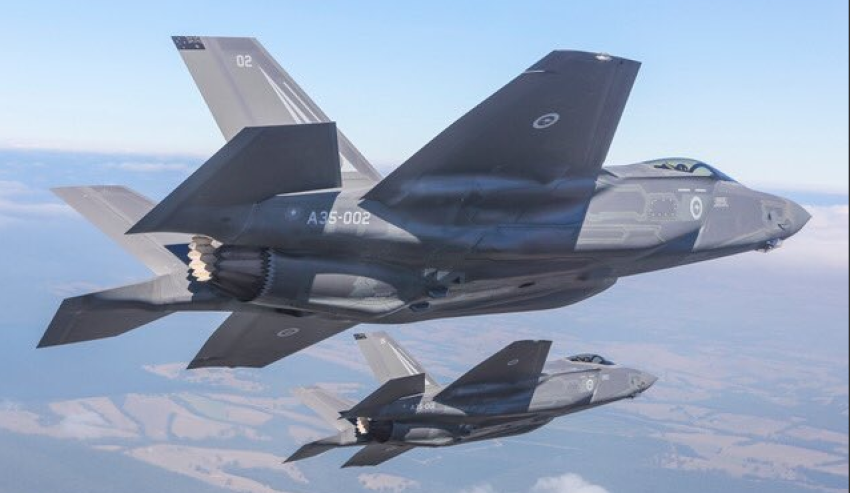The first two fifth-generation F-35 combat jets are set to arrive on Australian shores this December. Over the coming month, Defence Connect will deliver a special series in the lead up to the arrival of the nation’s next-gen fighter.
To continue reading the rest of this article, please log in.
Create free account to get unlimited news articles and more!
Defence Connect can now confirm that Australia's first two F-35 Joint Strike Fighter aircraft will be arriving at RAAF Base Williamtown on Monday, 10 December 2018.
Over the coming month, Defence Connect will deliver series of daily insights covering a range of issues and topics as we prepare for the arrival and operation of Australia's F-35 including:
- Fifth-generation capability: Sensor fusion, fifth-gen weapons and stealth;
- Australian industrial participation from primes to SMEs;
- F-35 supporting local industries and communities;
- Future of the F-35 and the growth potential; and
- The RAAF experience: From pilot to the commander.
Over the coming years Australia will purchase 72 of the advanced fifth-generation fighter aircraft as part of the $17 billion AIR 6000 Phase 2A/B program, aimed at replacing the ageing F/A-18A/B classic Hornets, with a potential expansion of the contract to 100 aircraft.
Fifth generation fighter aircraft represent the pinnacle of modern fighter technology.
As a fifth-generation aircraft, the F-35 is a blend of all-aspect stealth even when armed, low-probability-of-intercept radar, high-performance air frames, advanced avionics and highly-integrated computer systems bringing a gods-eye view of the battlespace.
Neale Prescott, director of business development for Lockheed Martin Australia, described fifth-generation technology as "the combination of low observability, which is built into the airframe from the design phase, and sensor fusion, combining radar, infrared senors and a distributed aperture system allowing pilots an unrivalled view of the battlespace."
In addition to acquiring 72 aircraft, Australia's F-35 project will also deliver facilities, weapons and new support systems to meet fifth generation requirements.
The workforce will also need to transition to meet fifth generation approaches to operating and sustaining Australia's F-35A fleet as part of a global F-35 network.
A boon for the Aussie supply chain
Australian industry participation in the F-35 program has resulted in 15 direct companies participating in various stages of the F-35 program, including manufacturing, training, maintenance and sustainment.
Early commitment to the global cooperative F-35 program has secured Australia as a key strategic partner and enabled Australian industry access to global supply chains.
This has already contributed significantly to Australia’s economy, with Australian industry having secured over $1 billion in production contracts to date through the global F-35 program, with additional work expected as the production rate ramps up over the next three years.
The F-35 will provide more than just a quantum leap in capability for the RAAF and the individual warfighter.
The aircraft will be responsible for supporting thousands of jobs around the nation, with Defence setting the key target for Australian industry participation in the F-35 program to be between $6-9 billion of production and sustainment work,through to 2050.
Discussing the industrial impact of the F-35, Lockheed Martin Australia F-35 program manager Andy Doyle said: "In the prime space we have seen growing collaboration and partnerships between the likes of Lockheed Martin, BAE Systems Australia, Pratt and Whitney and Northrop Grumman."
"This collaboration has filtered through to supporting the growth and integration of key Australian SMEs like Marand, Quickstep, Varley, Milksil, TAE and RUAG in supporting the various components, maintenance and sustainment processes which combine to create the F-35," he said.
Australia has quickly established itself as an essential hub in the global F-35 industrial partnership, with two sustainment and maintenance depots to be located in Australia, namely:
- BAE Systems Australia, based at Williamtown, was assigned regional F-35 airframe depot maintenance responsibility for the South Asia-Pacific region;
- TAE Aerospace, based at Amberley, was assigned regional F-35 engine depot maintenance responsibility for the Asia-Pacific region.
As a key part of developing a sovereign training, maintenance and sustainment capability, the Air Force, CASG and industry partners have collaborated to enhance the way Australian industry, both primes and SMEs participate in the project.
Preparation for F-35 arrival Down Under on track
Original equipment manufacturer Lockheed Martin has been working closely with Australian industry partners, such as training provider Milskil, to prepare for the arrival of F-35 initial operating capability (IOC) in 2019.
As part of the F-35 JSF Integrated Training Centre (ITC) at RAAF Williamtown, Milskil will provide key training solutions, including the Aircraft Systems Maintenance Trainers (ASMTs) currently being installed, which will allow students to immerse themselves in all core maintenance tasks on the F-35.
This training technology enables more robust, immersive maintenance training to occur without tying up aircraft to do it.
Meanwhile, for Australian SMEs like Quickstep Holdings, Marand Precision Engineering and Heat Treatment Australia, Australia's F-35s have provided unique opportunities for both local and global reach as they play a pivotal part in Australia's industrial participation in the global supply chain.
"From a production perspective, Australia's involvement in the F-35 program is a successful example of the government's defence industry capability plan. Australian industrial participation has the opportunity to support the entire production run of the 3,000-plus aircraft and the corresponding block upgrades which will be implemented throughout the life of the F-35," Doyle explained.
Prescott reinforced this, saying: "Australian industry will see huge benefits from 2023 when we have the entire fleet of Australian aircraft in country and this will continue as Australia expands its role as a regional maintenance, sustainment and training hub for both Australian and allied F-35s throughout Asia."
If you or your business is involved with supporting Australia's F-35s, or you know of one that is, please get in touch with us at

 Login
Login







